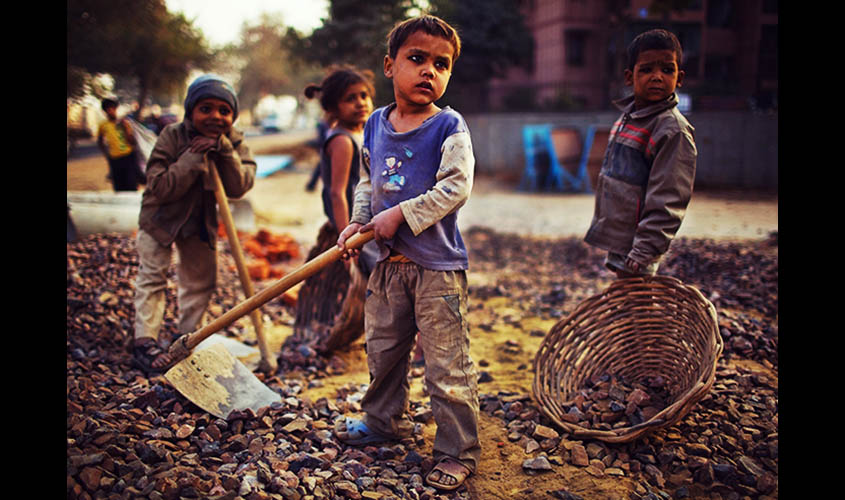Over 13 million people in India work as bonded labourers, which include children and women. Also, about 15 million children work as child labourers who are employed in rural areas as cultivators or in household industries, while some work in urban areas as servants and even at construction sites, according to a report available with Prayas, a child focused and development NGO.
Delhi alone accounts for one million of these child labourers who work as bonded labourers in small factories and construction sites. Apart from this, the condition of child labour in states like Bihar, Rajasthan, Madhya Pradesh, Maharashtra and Uttar Pradesh is deplorable, and UP has seen a 13% growth in child labour in the last one decade.
Tara Devi was born in a family of bonded labourers. Her parents had been working in brick kilns for generations and she worked as a bonded labourer in the same brick kilns for years, till she came to know from an NGO that she was a bonded labourer. For her, it was her normal life.
“I did not know that I was a bonded labourer. I saw my parents doing such odd jobs and therefore I also joined them when I was 10 years old. We hardly get paid and what we get as remuneration is food and some clothes and shelter to live inside the brick kilns. I was married off at a very young age, but even then, I had to continue working there as I was not allowed to leave. But the NGO came and made me realise that I was being used as a slave and rescued me from there,” Tara Devi said. She was freed in January 2010 after which she was given a compensation of Rs 20,000 by the state government to build a home. Now she works with a sewing machine and sends her children to schools so that they don’t undergo the “slavery” she had to undergo.
Birender, another survivor, escaped certain death when the owner of the brick kiln where he worked threatened to throw him in fire to burn him alive because his brother had run away.
However, he overcame the trauma not only to become free in 2011, but is now involved in an awareness campaign against human trafficking and bonded labour. At a round table consultation on the “Central Sector Scheme for Rehabilitation of Bonded Labourers 2016” organised by Prayas and Human Liberty Network at the India International Centre in Delhi earlier this week, former Minister of State for Labour and Employment Bandaru Dattatreya expressed his anguish at the situation and said, “It is a shame that bonder labour is still prevalent in this country even after 70 years of Independence”.
He said that efforts are being made by the Centre to implement the Central Sector Scheme for Rehabilitation of Bonded Labourers 2016 and the National Child Labour Project (NCLP), adding that ultimately such schemes are to be implemented by the states as the matter is a concurrent subject.
Amod K. Kanth, General Secretary of Prayas, said, “There is a dire need to reach out to the 84 million out of school children and link them to rehabilitation schemes like the bonded labour scheme and NCLP as they would, otherwise, fall prey to bonded labour.”
Praising the revamped bonded labour scheme, Kanth added that more states need to set up mechanisms for implementation and creation of the Rehabilitation Fund under the scheme.

